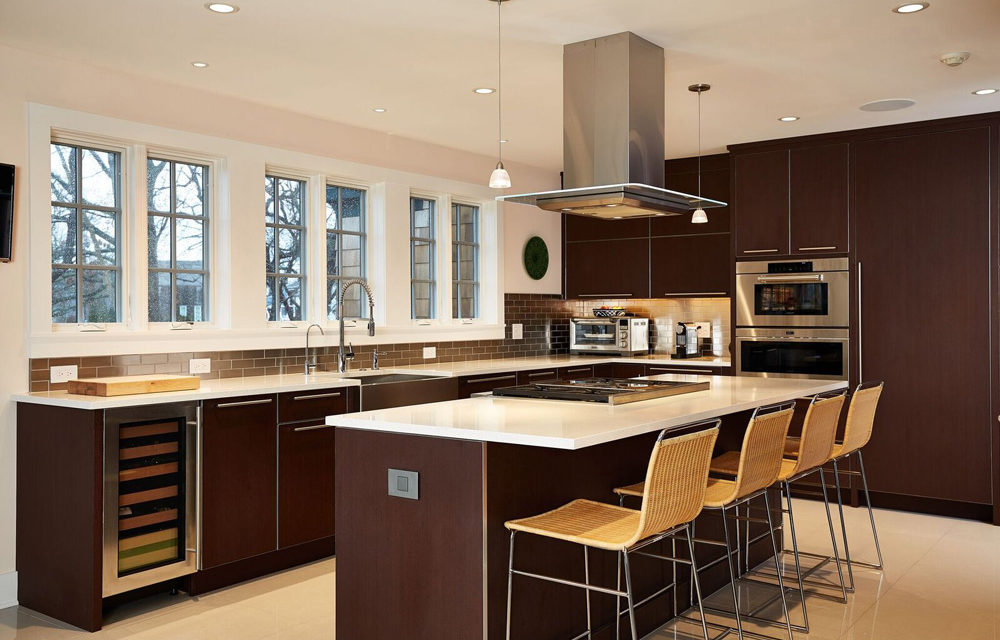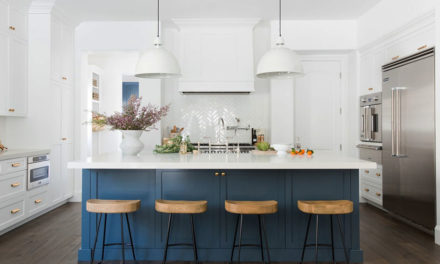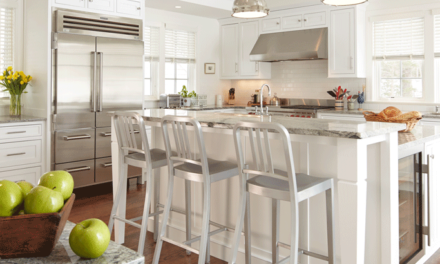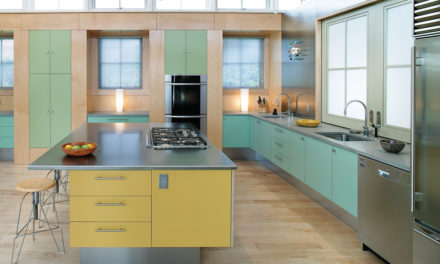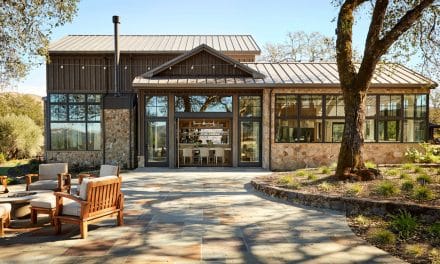In Coffee and Tea, Jennifer delves into the mind of Rick Gedney of Kitchens by Gedney. While sipping coffee and tea, Jennifer learns why and how a designer does what he does through discussions of process, techniques, and tools of the trade.
For some reason, dark cabinetry has never appealed to me. Yet, in this kitchen, it does! So, I started today’s Coffee & Tea asking Rick Gedney, “So, why do I like this kitchen?”
Dark Cabinets Ground The Space
“If this was a kitchen that had just one casement window with dark, wall cabinetry to the left and right of it, the whole kitchen would feel dark,” he says. “This kitchen has three casement windows on the window wall, which adds a lot of white trim, glass and therefore, a lot of light. The contrast of the dark cabinets grounds the whole space in contrast to the light and white environment. Plus, the walls, countertops and flooring are all neutral. If the kitchen were white, it would look like a polar bear in a snowstorm.” So true — it would disappear!
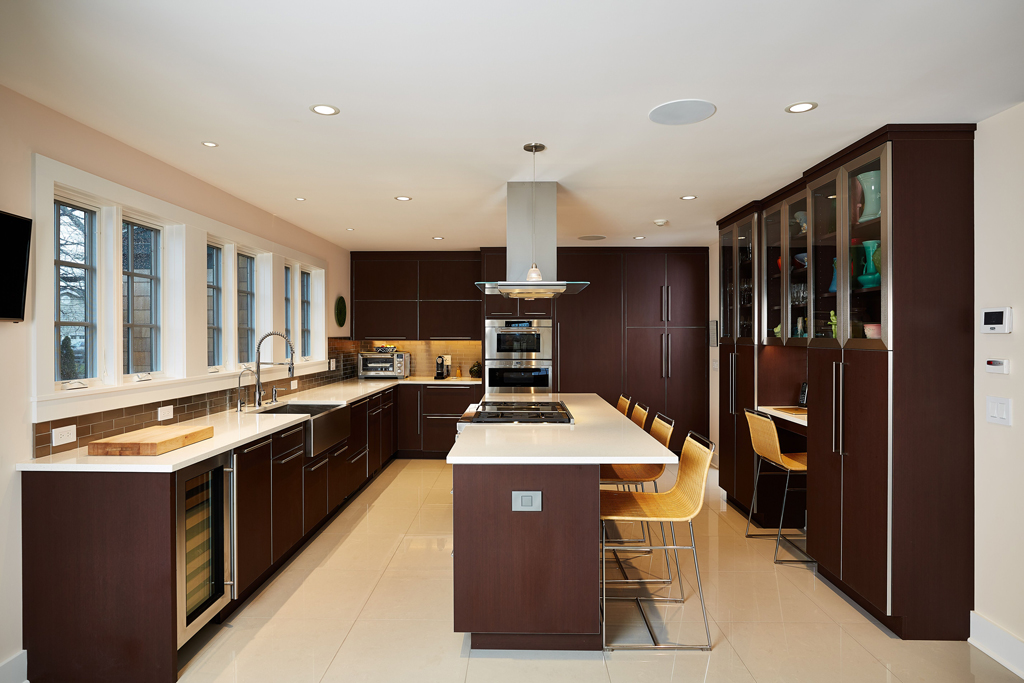
Traditional Materials Used in a Contemporary Way
Located in the borough of Fenwick, a classic, New England summer community where homes have remained in families for generations, this home’s kitchen does just what the rest of the house does — “winks at the past, while hitting towards a more contemporary feel in a crisp way,” Rick continues. The homeowners, who moved here from Los Angeles and also work in creative industries, helped influence the design process.
“What we’ve done is taken three traditional materials — wood, marble, and stainless steel — and reconstituted them into modern versions,” he says. For example, the cabinets are textured European laminate that feels and looks like wood grain up close, resembling mahogany wood. Quartz countertops offer a modern twist to white marble.
And, while a white, farmhouse-style sink is most commonly made of fireclay or porcelain, this one is made of stainless steel. It offers an old-fashioned element in a different way. If you look at the photo, you also see it’s a shape that’s traditional, yet an element that’s modern. Square corners keep it crisp and make it less country.
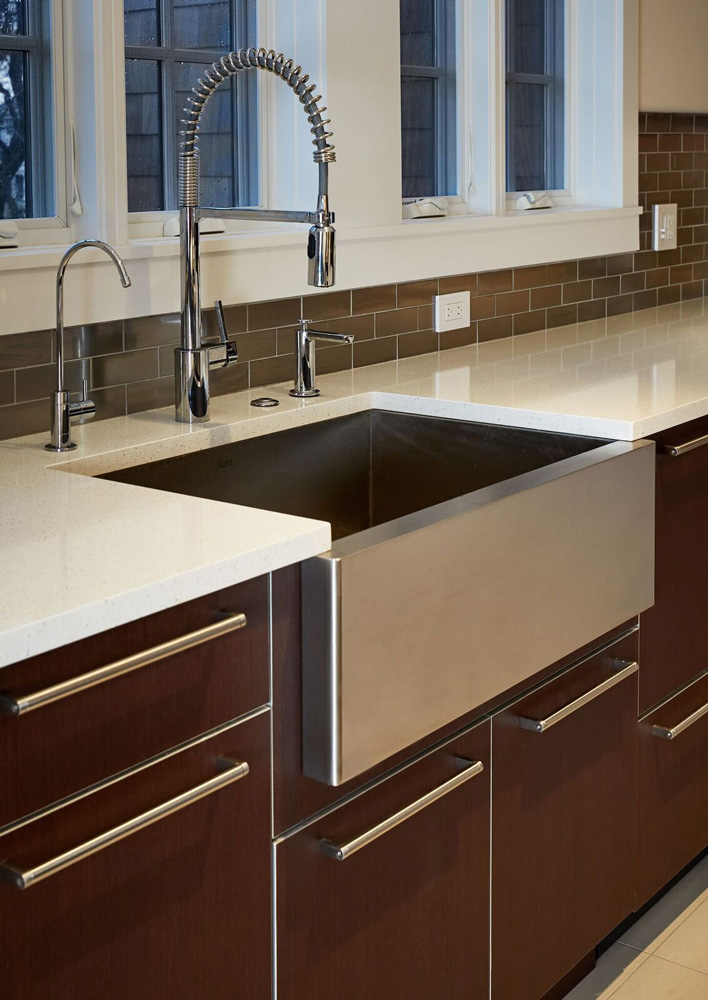
Stainless Steel Creates Sleek & Finished Look
Stainless steel trim on the cabinets ties back to the other stainless elements and updates the look of a wood slab door. Along with the faucetry and trim on the wine cooler, the stainless steel helps create a sleek and finished look. Also, the brown subway tile used for the backsplash has a reflective, metallic quality to it that plays on the stainless steel.
But, the boldest move is a stainless steel island hood dropping out of the ceiling. “It’s a powerful piece of sculpture, especially with the two, small flanking pendants,” says Rick. “Not many homeowners would make this move. Most would rather put the stove on a wall with a hood or put a down draft in. If that hood is not there, I’m not sure if this kitchen would have the same pop, the same pizazz, the same modern aesthetic.”
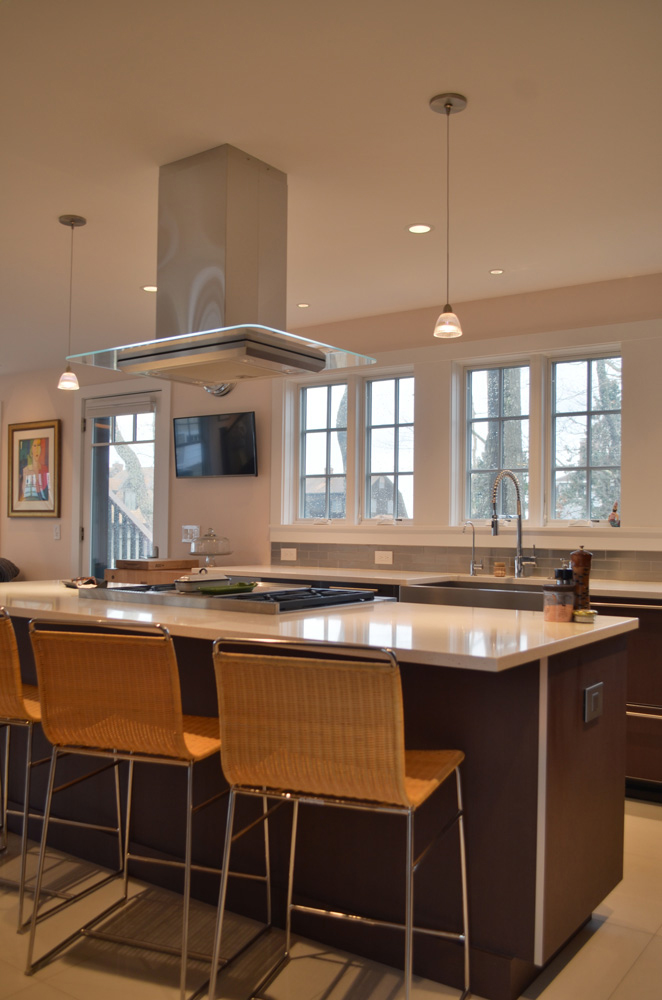
Cabinets “Bat Wing” Up
Using Blum Aventos, which Rick says is state of the art hardware, the wall cabinetry doors hinge or “bat wing” up. By going this route instead of traditional side swinging doors, there’s a functional benefit. Standard swinging doors would hit the trim and wall (and plate) or gauge the adjacent cabinetry. Plus, accessibility into the cabinet is enhanced. Rick says it also allowed the continuation of the horizontal orientation of the metal pulls, which adds a cool, modern element, whereby vertical would be more traditional.
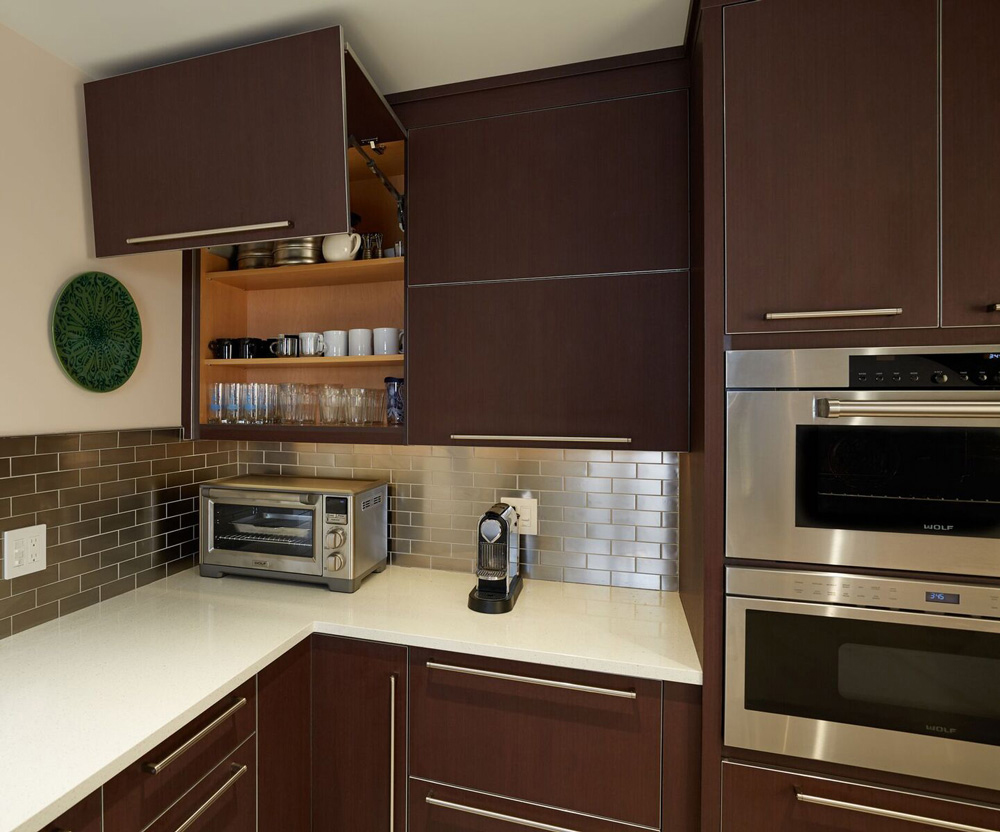
Pick Three & Put Everything Else Away
At the end of our chat, I “get it” – I’m attracted to this space because the space is light and bright. Plus, I really like the use of the old-fashioned elements in a modern way. But, here’s another reason why: there’s no clutter! And this is how these homeowners really live. Yep, this photoshoot was not doctored. “Pick three,” Rick always says. “Let’s keep three things out besides flowers and fruit and put everything else away in drawers or roll out shelves.”
“If this kitchen was covered with stuff, it would look different,” he says. “Analyze how many times you really use something. It brings peace when you simplify and live a more minimalist life.” After our chat, I put away my blender, popcorn maker and crock-pot — small appliances I truly use, but not every day. I’m still a long way off from the magic number three, but I’m getting there.
All Photography by Tom Hopkins Studio


